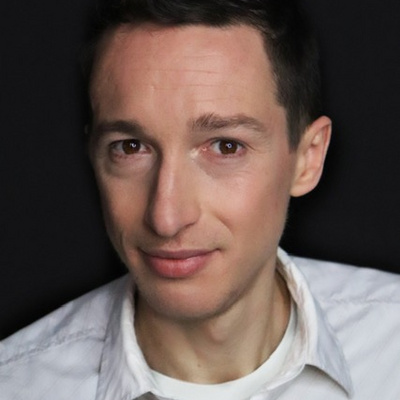Circus Immersion: The Human Body in All Its Simplicity
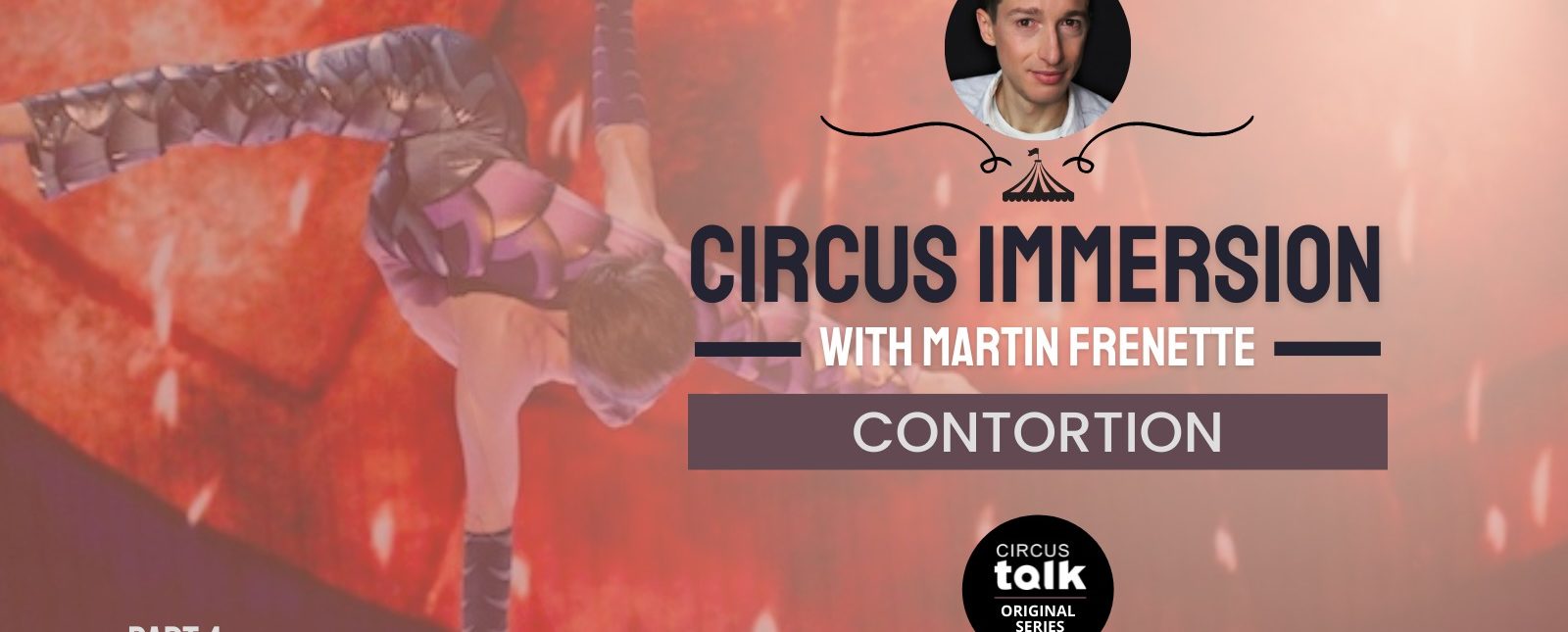
Flexibility, or a lack of it, finds its way in each and everyone’s life. Daily reminders come when one bends down to tie their shoelaces, squeezes themselves in a narrow airplane seat, or stares at the person behind during a yoga class’ backbend. Regardless of a natural ability to dislocate a shoulder or the gasp that comes with lifting a leg at a 90-degree angle, all can relate to a split or a bridge’s physical demands. A fact that partly explains why contortionists get strong reactions from the crowds and the audience’s vote in TV talent shows. Russian contortionist Alexey Goloborodko goes further by affirming that their acknowledgment of a contortionist’s discipline and endurance is behind this response. “People really appreciate beauty in all its forms and contortion is one of its best symbols. It ain’t about tricks but the beauty of the human body.”
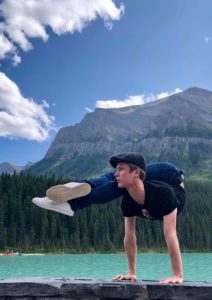
The 26-year-old sees his craft as a way to build anything with one’s body and appreciates its simplicity and how it seamlessly blends with other movement forms such as ballet or aerial performances. Young Alexey had no idea what a contortionist was when a traditional circus advertisement caught his eye in his hometown. Fascinated by the high energy and unique atmosphere under the circus tent, he immediately wanted in on it and asked his mother to take him to the city’s circus studio. A series of exercises confirmed his potential and convinced his coach Vladislav Rodin that the 6-year-old could become a professional contortionist. As the years went by, Goloborodko’s improving flexibility and fluidity led to the creation of a dozen acts in which he portrayed everything from a swan to a Russian puppet.
Aware of how unusually limber he is and of the reactions his twists and turns cause, Goldborodko insists that contortion isn’t about one’s moves but how they do them. Fluidity and the ability to move swiftly from one position to the next have always been at the heart of his practice. “I want to mesmerize the audience and move in a way that they can’t see when I’m getting into my next pose,” he adds with a smile and a hint of mystery in his voice. To him, this desire to connect with and mesmerize an audience is what differentiates flexible people from contortionists. The first ones happen to have good physical condition while the others use it to perform and provoke powerful emotions.
My body is my sole instrument and the movement goes straight to them without the intervention of a prop or partner
When asked to describe his relationship with his body, the young man refers to it as his instrument and the only one he needs to practice his craft. Beauty, poetry, and simplicity are the three words that best define his perception of the discipline. Just like musicians use instruments to create melodies, contortionists use their bodies to create beautiful and poetic-looking shapes. Their acts are of the very few that require no prop and have very little technical needs. The danger may not seem as real next to a teeterboard or a high wire, but contortion’s on-stage simplicity translates into additional off-stage work.
“A lot of time is spent relentlessly rehearsing my act, repeating every trick and transition backstage to have them come to me automatically once on stage. It’s easier to focus on my character and on the spectators if movements come to me naturally. My body is my sole instrument and the movement goes straight to them without the intervention of a prop or partner.”
Personality and personal expression are important factors in an act’s success in Goldoboroko’s mind, especially a contortionist’s with nothing but a body and what’s within as its core. An experienced juggler can create a show stopper with a single ball while a beginner contortionist can fail to impress with their best trick since the first one has a better physical awareness and a more defined personality than the latter. “The beauty of movement must prevail. That’s contortion and why audiences are fond of it. They appreciate the poetry and the beauty that a human body can convey,” says Goldoboroko.
Deep love and a sincere appreciation for the audience fill the young man’s voice and bring light to his face whenever he talks about those watching. Having received rave reviews in Cirque du Soleil‘s Luzia since the show premiered in 2016, the production remains one of his career’s highlights. Referred to by many as the world’s most flexible man, the impassioned artist is far more interested in the relationship he has with ticket buyers than the praise they give him. He describes it as an energy exchange, one that pushes him to keep on training, aiming for more fluidity and better movement quality to literally hypnotize the next ones to catch him on stage.
The Show and its Purpose Come First
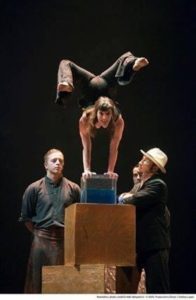
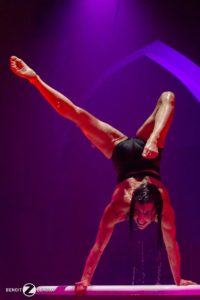
And as one contortionist’s mind remains focused on movement, another’s is geared towards what’s behind it. First known as one of “Cirque du Soleil’s four little contortionists,” Nadine Louis has spent the last two decades getting in and out of intricate positions as much as in and out of roles. A need for new artistic challenges and a more theatrical approach were behind a circus hiatus spent at Canada’s national theater school.
“I was 19 and needed to explore new avenues, find other ways to be creative. My school years fed me tremendously as an artist and have had an impact on how I approach contortion and act creation. I understood how theater and circus can merge, how one’s personality and humanity can give more than technique to an audience. Working onRainwith Daniele Finzi Pasca taught me how theatrical a circus performance can be. It became about moving the audience rather than wowing them.”
Having nothing but my own body to express and present myself gives me the artistic freedom I seek in creation and brings more contrasts to my performances
Much like her Russian colleague, Louis believes that contortion’s simple, more human approach is enhanced by its lack of props and heavy technical needs. A discipline that finds its roots and identity in the human body leaves more room for interpretation and individuality since there are no two bodies alike. If contortionists aren’t often seen as the ring’s daredevils, this artist sees something divine in witnessing someone going beyond certain limits without the expected danger factor. Contortion is a well-grounded discipline and this deep contact allows one to explore the movement’s subtleties. Locking eyes with an audience member while in an unnatural-looking shape can provoke the most surprising reactions, from disbelief to discomfort and everything in between.
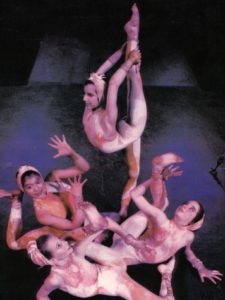
“I’ve reached a point in my career where the show and its purpose come first. Having nothing but my own body to express and present myself gives me the artistic freedom I seek in creation and brings more contrasts to my performances. Being in the present and enjoying it as much as possible has always been the goal and I’d like to keep creating and performing for as long as I can,” says the mother of three while looking after her eldest.
Her charisma, sense of timing, and the theatrical signature present in each of her acts have allowed her to tour across the United States in Cirque Eloize‘sRain, dip her toes inPalazzo andSoap’s bathtubs in Vienna and Berlin, as well as portray a spider for Cirque du Soleil’sOvo. At a time where most would consider that they’ve done it all, Nadine Louis won’t stop stretching and finds boredom to be impossible to encounter in a discipline that welcomes change and evolution.
“I want to keep on researching and diving deep into creation. I’m currently working on a very abstract concept where the bodies are hardly visible. I don’t see any reason why I should stop creating and performing, my goal is to make the most of my connection with the audience and having it last as long as possible.”
Before getting back to her kids, Louis concludes with a reminder that there are ways to do these movements and create those images, ways that are physically safe and artistically stimulating. She found hers training with her three “contortion sisters” at Montreal National Circus School in the late 1980s and early 1990s. Not every flexible person can go through a contortionist’s physical transformation and creative process and it is up to each to find the way that suits them and will supply the tools to a lasting career.
Connecting Earth and Air
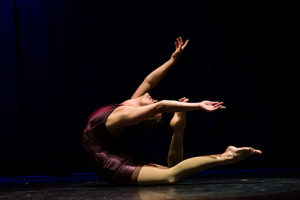
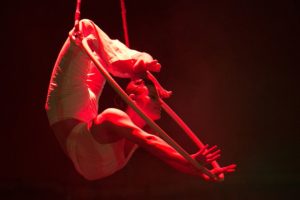
Lena Gutschank found those first tools in her German hometown of Unna. That is where a circus tent, its colorful lights, and sparkling costumes ignited something special within the young girl with a fondness for gymnastics. Inspired by five young girls twisting in and out stunning shapes, she joined the city’s kid circus. Fascinated by the new movement possibilities she had seen and that devoted Valentin Kriger introduced her to, the dedicated beginner grew into a determined young woman with an eye on professional schools. Although she never planned on making contortion her main discipline, it became an important part of her aerial hoop act and artistry at Berlin State’s ballet and circus school.
“I’m a slow mover with a fondness for detailed work. Contortion invites to a deeper and more detailed way of moving. What I feel inside is as important as what people witness from the outside. Contortionists must pay close attention to what their body is saying. Using our breath as a guide from one move to the next allows us to know and control how far our limbs and limits can be pushed.”
Seeing her discipline as one of many means of expression to tell a story and share feelings, the 36-year- old believes the movement’s psychology to be more present in contortionists’ minds, if only to convey an “at home” feeling in the trickiest of twists. The balance of strength and flexibility present in a contortion piece also translates into a blend of softness, fierceness, and vulnerability. The color given to shapes and splits by those emotions contributes to audiences’ strong reactions.
“Passive and active flexibility offer different possibilities and variations to one’s vocabulary. The choice of going from one or the other can make any trick look entirely different. It feels like molding a body like a sculpture,” says Gutschank.
Regardless of the way one chooses to go, she believes that patience, love for and interest in the body, and the ability to find some form of joy through pain are traits that most contortionists have in common.
An appeal in the discipline’s simplicity and in being present, in the moment, would be next on the list given that they were brought up by these three.
I want the audience to experience the joy that the movement brings me.
“Being in the moment and giving it my very best is and has always been the goal. Am I here and fully aware of what’s happening? Are we connected? These are just some of the thoughts that cross my mind as my hoop rotates above the crowd. There’s nothing like grabbing someone’s full attention to get back to the here and now. I hope my work allows the audience to feel the joy that I feel when moving, and that it reminds them of the beauty of the human body in its simplest form”
Having spent eight winters performing around Europe in Palazzo’s dinner shows, the previous two were her first spent at home after carrying and giving birth to her son. Still craving creation opportunities and looking forward to show venues reopening worldwide like her Russian and Canadian colleagues, Gutschank is focusing on reconnecting with her body, redefining their relationship, and on new ways to push her limits.
When it comes to contortion, performers and spectators seem to be linked by one common thread: fascination in the human body’s ability to break boundaries. There is something as athletic as artistic in seeing those shapes and positions come to life and each can find what inspires them most in a performance. Some see the stunt and prowess, others are moved by the delicacy and musicality weaving movements together. Contrary to popular beliefs and regardless of what one prefers, hearing representatives of three generations on the topic proves that one can age well and peacefully in its practice.
All pictures courtesy of Alexey Goloborodko, Lena Gutschank, and Nadine Louis. Feature photo Alexey Goloborodko.Editor's Note: At StageLync, an international platform for the performing arts, we celebrate the diversity of our writers' backgrounds. We recognize and support their choice to use either American or British English in their articles, respecting their individual preferences and origins. This policy allows us to embrace a wide range of linguistic expressions, enriching our content and reflecting the global nature of our community.
🎧 Join us on the StageLync Podcast for inspiring stories from the world of performing arts! Tune in to hear from the creative minds who bring magic to life, both onstage and behind the scenes. 🎙️ 👉 Listen now!
